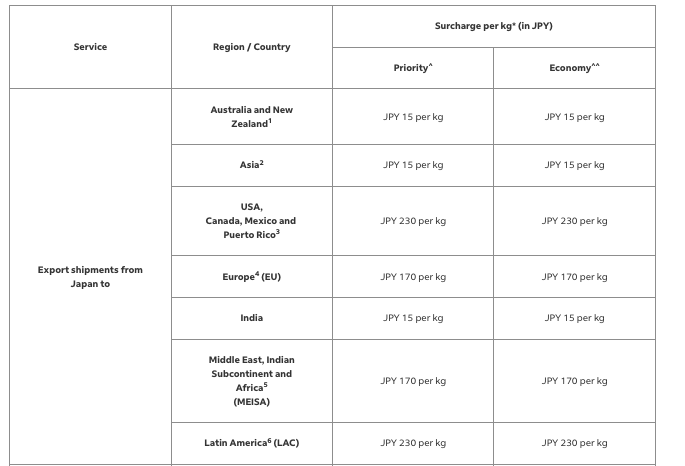FedEx and DHL surcharge fees
Understanding the Demand Surcharge Fees Introduced by FedEx and DHL (September 2024)
In the fast-paced world of logistics and shipping, external factors such as market demand, operational costs, and global challenges can significantly impact pricing strategies. In response to such fluctuations, both FedEx and DHL have introduced a Demand Surcharge Fee as of September 2024. This fee is designed to manage the increasing demand for shipping services while maintaining service quality.
What is a Demand Surcharge Fee?
The Demand Surcharge Fee is an additional charge applied to shipments during periods of high demand or operational challenges. It allows carriers to adjust their pricing to account for the added strain on resources such as fuel, labor, and logistical infrastructure. During these peak periods, carriers experience higher operational costs, and the surcharge helps to offset these expenses.
Why Was It Introduced?
Both FedEx and DHL have faced surges in shipping volumes, particularly during global events, holiday seasons, and supply chain disruptions. These surges have led to increased pressure on their shipping networks, resulting in delays, congestion, and a rise in costs. The surcharge enables these companies to manage capacity, ensure service reliability, and cover the expenses associated with these challenges.
The global economic landscape has also contributed to this decision. Fuel price volatility, inflation, and the ongoing effects of global disruptions (such as post-pandemic recovery) have led to rising costs for carriers. By introducing the demand surcharge, FedEx and DHL can maintain operational efficiency while still delivering timely and reliable services to their customers.
FedEx Surcharge Fees
Demand Surcharge
FedEx implemented a Demand Surcharge from September 16, 2024, to January 31, 2025, affecting international shipments. This surcharge is applied during high demand periods to offset operational costs. The fee varies based on regions and shipping types, ranging from JPY 15 per kg for exports from Japan to places like Australia or Asia, to JPY 230 per kg for shipments to the USA and Europe. The minimum surcharge is JPY 150 per shipment.
For detailed rates, visit the official FedEx page.

Fuel Surcharge
In addition to the demand surcharge, FedEx applies an International Fuel Surcharge that fluctuates based on global fuel prices. This surcharge helps cover the increased costs of fuel, ensuring FedEx can maintain its global shipping network efficiently. The surcharge rate is adjusted weekly and is based on the average price of jet fuel. Customers can view the current fuel surcharge rates and detailed calculation methods on the official FedEx page.
DHL Surcharge Fees
DHL has introduced a Peak Season Surcharge from September 15, 2024, to January 31, 2025, to maintain stable service during high-demand periods. The surcharge applies to several DHL Express services, including DHL Express Worldwide, DHL Express Import, and DHL Medical Express, among others. The fee is based on the shipment's origin and destination, with specific per-kilogram rates applied to cargo.
For full details, visit the official DHL service information page.
